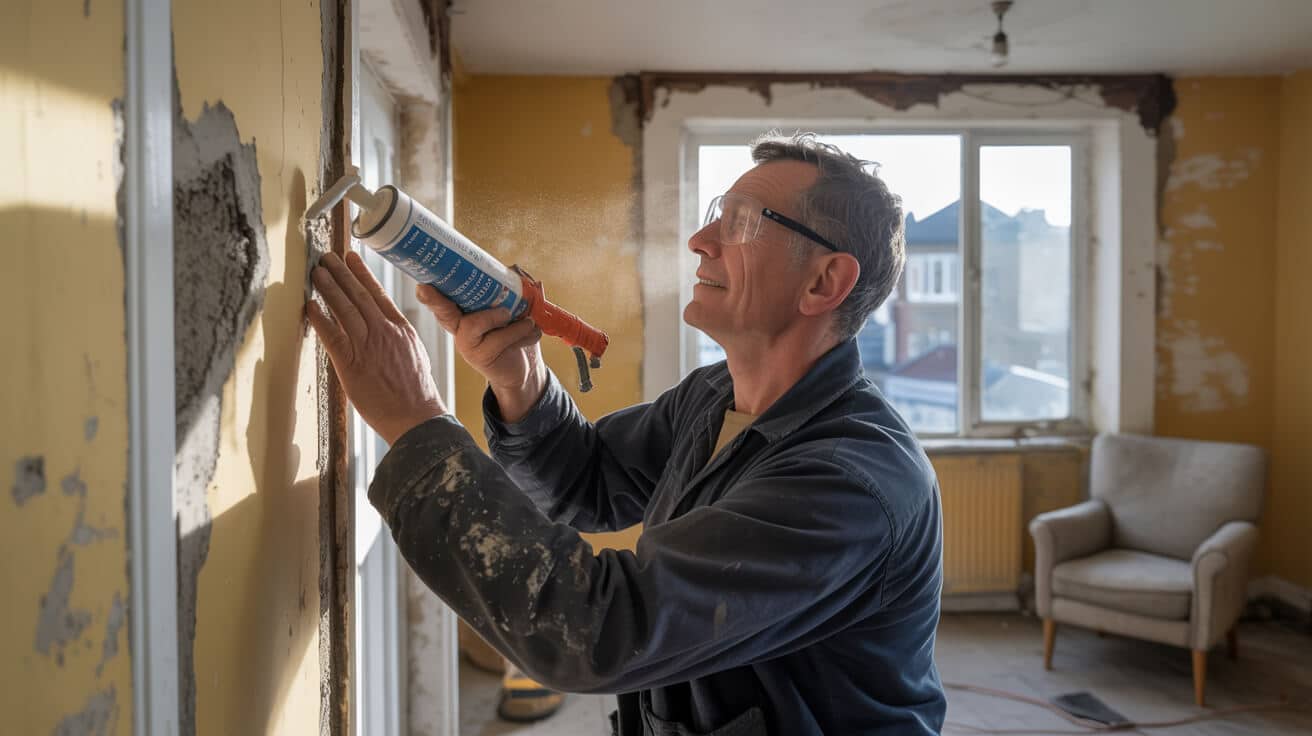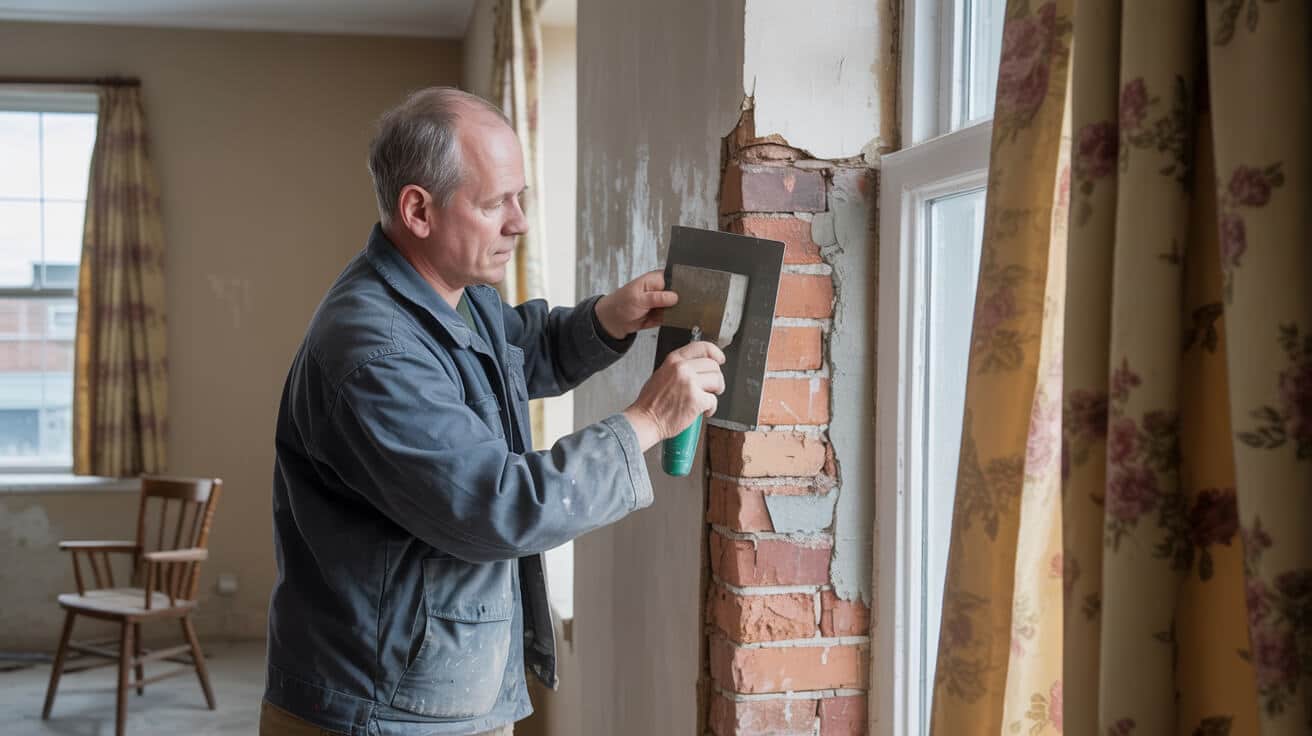 Renovations, Building Regs & Awaab’S Law What To Consider
Renovations, Building Regs & Awaab’S Law What To Consider

What Has Awaab’s Law Changed for UK Property Owners—And Why Does It Matter Now?
Awaab’s Law isn’t just a new headline for property professionals—it’s a test of how quickly you can adapt, prove your process, and protect your asset. If your gut says it’s “just for councils,” that thinking now risks your reputation, finances, and future deals. The landscape has shifted—compliance is on show, tenants know their rights, and the Regulator expects evidence, not excuses.
The property world’s margin for error has evaporated. Every missed report, slow repair, or casual chat is now a public test of your system.
Before, you could fix a problem quietly and move on. Today, the law puts your every move—complaint logged, repair done, certificate filed—into a timeline. A late response or missing documentation is no longer just a bump; it’s evidence of failure if the Regulator, a tenant, or an insurer asks questions.
Awaab’s Law sets new standards:
- You must log every tenant complaint—phone, email, chat—with clear dates.
- Serious issues (health hazards: mould, leaks, unsafe electrics) trigger a legal 24-hour repair response clock.
- All other repair requests must be acknowledged and investigated within 10 working days.
- Actions, not intentions, define compliance—tenants and authorities will check your digital (not verbal) record.
Landlords and property managers now face penalties, spot-checks, and real business risks if their paperwork and actions don’t add up. Alternative approaches—like informal fixes, relying on trusted contractors without current credentials, or “good old-fashioned common sense”—are fast becoming liabilities.
Why it matters:
- Tenants have leverage: Social media, tenant advocacy groups, and legal help make silent complaints impossible to ignore.
- Your financial partners (insurers, lenders) expect risk-proof evidence.:
- Your next deal, lease, or contract is easier when you lead on compliance, not scramble after problems.:
Don’t gamble with outdated systems—the price is higher authority scrutiny, longer voids, or losing tenants to more proactive landlords.
How Do New Building Regs and Awaab’s Law Rewrite Your Renovation Risk?

Throw out the “tick box” mindset: modern renovations, extensions, or even minor upgrades now carry fresh compliance exposure. Even small projects can trigger major repercussions if you miss the new registration, documentation, or sign-off requirements.
Upgrading a kitchen, converting a loft, or fixing damp? Under Awaab’s Law and the post-Grenfell regime, every change is a legal record, not just a contractor’s invoice.
Key differences you’re facing now:
- Registration before you build: If the work affects a “higher-risk building” or major element (fire, ventilation, structure), you must notify the Building Safety Regulator (BSR) or local Building Control before starting.
- Dutyholder clarity: You’re now expected to prove—upfront—that everyone involved (designer, contractor, yourself) has current skills, insurance, and competence.
- Digital “golden thread” of evidence: Every plan, change, inspection, and fix must be logged in sequence—files, emails, photos, certificates.
If you miss these steps:
- Projects can be halted on the spot. BSR and local authorities can issue stop notices, fines, or require expensive remedial work.
- Future tenants, buyers, or insurers may flag missing documentation as a barrier to sale, claim, or occupancy.
It’s easy to miss a step—but impossible to cover your tracks after. The Regulator wants to see decisions, not just results. *(Trowers & Hamlins, 2024)*
What’s changed is pace and transparency. If your approach was “get work done and tidy up the paperwork later,” that’s now a trap—modern compliance puts the process on centre stage.
How Do You Know If Your Property is a “Higher-Risk Building” (HRB)—and What Triggers the New Regime?

What makes a property “higher risk” isn’t just a headline number. It’s a combination of height, use, and complexity—and it’s tripping up more owners and managers than you’d think.
Typical triggers under new rules:
- Buildings over 18 metres (or 7+ stories)—including flats, mixed-use blocks, or properties with shared amenities.
- Properties where residential use is mixed with commercial/leisure (think: retail below, housing above).
- Conversions—especially where floor layouts or emergency routes change.
One wrongly-classified floor, or missing mixed-use declaration, can trigger a regulatory reset—delay, audit, and a new risk profile for your asset.
Parsing the real risk:
- Not sure?: Use the BSR’s own online checker, or ask a compliance specialist.
- Major works or renovations: HRBs require registration before *any* works (structural, M&E, refit).
- Principal Designer & Contractor must be named—with paper trail—before starting.:
Missed an HRB step?
Expect project halt, re-inspection, and higher insurance scrutiny. The “one-size-fits-all” era has ended. If you’re unsure, treat every significant project with an HRB-level of care—better to have documentation and not need it than the costly reverse.
You can’t fix paperwork problems after the fact—Regulators expect records made at every step, not recreated months later.
Why Your Choice of Trades and Project Teams Now Decides Your Legal Exposure

It’s no longer just about workmanship. Under Awaab’s Law and new Building Regulation reforms, every person you appoint—from the lead designer to the handyman—is part of your compliance chain. Skill, training, and up-to-date certification are essential. If you get “cheap and cheerful” or stick to familiar faces without checking paperwork, you could be exposing your asset, your business, and even yourself to investigation.
The Regulator doesn’t care if someone’s ‘done it for years’—only that they’re competent *now* and proved it in the right way.
What property owners and managers have to do:
- Get digital evidence of certifications.: No certificate on file, no start date. City & Guilds, NVQ, RICS, CIOB, or industry equivalence now required.
- Demand tailored insurance: General cover is out. Insist on specifics for every contract role—main contractor, sub, or specialist.
- Log and update every training module, compliance refresh, or code update—annually.:
What happens if you don’t:
- Voided insurance claims after incidents—complete loss of payout.
- Personal liability queries from Regulators or courts.
- Project delays (or total stops) if a single role is missing paperwork.
- Tenant and stakeholder distrust—making asset management harder long-term.
Put simply, tomorrow’s compliance checks expect recorded competence, not just reputation.
Why Starting With Building Control is the Only Safe Move—Not an Afterthought

Leaving Building Control out until the end—or thinking a quick sign-off wraps up any loose ends—is yesterday’s risk. Today’s Regulator, insurers, and tenants expect you to show progress, process, and proof as you go.
By the time the building inspector walks through, missing documents or unsigned plans are red flags, not formalities.
Best practices for modern property upgrades:
- Register before the works start: Use the BSR portal for HRBs, or inform Local Building Control for smaller properties.
- Keep a “golden thread” file: Every drawing, order, decision, and inspection in real-time—paper doesn’t cut it, digital is now baseline.
- Document all changes, no matter how minor: —what’s “just a spec switch” today is a compliance risk tomorrow if it isn’t logged.
The cost of delay, omission, or “gaps”:
- Expensive rework if a missing step is spotted late
- Insurance claims denied for “process breach”
- Contract disputes and reputation damage—especially if a tenant or authority requests a records audit
In short: compliance is now real-time storytelling—delay or fuzzy sequencing is where claims and regulatory actions begin.
Why Damp, Mould, and Moisture are the Quickest Routes to Regulatory Trouble

Damp isn’t just a tenant grumble—it’s the most common tripwire for enforcement, penalty, and legal challenge under Awaab’s Law. If your process for managing, logging, and remedying moisture problems is weak, you’re running on borrowed time.
Ignored damp is no longer a maintenance issue—it’s evidence of non-compliance and risk.
What keeps you safe:
- Every complaint receives a logged, timestamped response—within 24 hours for urgent health risks.:
- Thorough investigation by day 10—even if the source is elusive.:
- Updates for the tenant throughout—text, email, or photo log.:
- Precise documentation—date-stamped images, signed reports, and action logs.:
The data doesn’t lie: the vast majority of regulatory penalties for property owners link back to either missed updates, broken communication, or lack of tangible audit trail—not malice or cashflow (Wright Hassall).
Social or private, basic or prime asset—if it’s damp, you’re accountable, and a weak process won’t save you.
Why Documenting Every Step is Your New Best Defence—Not Red Tape

What’s on paper (or screen) now decides whether your storey is believed. When disputes, regulatory checks, or insurance claims arise—your audit trail is your asset’s “health passport.” No claim, defence, or inspection holds up without verifiable, accessible records.
A missing log is proof of neglect, not a bureaucratic slip. Auditors and insurers go where gaps appear in your records. *(Home Building & Surveying Co.)*
What matters most:
- Every complaint, photo, and inspection logged—not after the fact, but as it happens.
- Certificates and tenant communications stored, findable, and date-stamped.
- Documentation “stress-tested” before you’re on deadline: run a mock audit, fill the gaps, and update before they bite you.
Digital workflow isn’t a luxury—it’s your insurance for smooth claims, stakeholder confidence, and peace of mind when rules change or scrutiny arrives.
If your gut says we’ll sort the details later, that’s the compliance gap regulators hunt for first.
Why Building Regulations Sign-Off is Your Pass or Fail—Forget Shortcuts

Whether it’s a major refit or a quick fix, every improvement is bound by Building Regulations at the point of completion. If you miss, fudge, or delegate sign-off to someone who can’t prove credentials, you risk vacant units, denied insurance, and compliance cold sweats.
Key sign-off priorities:
- No certificate, no closure: EICR for electrics, Gas Safe, FENSA for glazing, and Fire Risk must all be recorded for regulated works.
- Control certificate, with evidence: Building Control completion *and* photo evidence filed in your digital log.
- Communications that close the circle: The last email, summary, or text update showing tenants and stakeholders informed of all finalised changes.
One missed document can unravel months of progress, spark a reinspection, or force you into expensive, time-consuming backtracking (CEL Solicitors).
Relying on contractors’ verbal assurances won’t withstand regulator or insurer pressure.
Smart owners and managers keep certification and sign-off at the front edge—not as an awkward afterthought.
How All Services 4U Future-Proofs Your Asset—And Simplifies Compliance
Your asset’s future is protected by evidence, not assumptions. We turn compliance into your superpower, not your weak spot.
All Services 4U delivers end-to-end property maintenance and renovation for this new regulatory era—combining trades under one roof, with live, digital, compliance-ready record-keeping.
What sets our approach apart:
- Multi-trade teams, one point of accountability: Joinery, electrics, plumbing—our coordinated teams remove blame shifting and cut trade handoff errors that break compliance chains.
- Live documentation: Every job, audit, and repair is photo-logged, timestamped, and accessible—instant proof for tenants, insurers, or regulatory bodies.
- Compliance-first advice: We audit, create, or catch up digital file trails to match the latest laws and Building Regs—ahead of inspections or insurance renewals.
- Rapid intervention: Same-day audits or gap-fix services for HRB issues, paperwork catchups, or formal pre-occupancy checks—no waiting, no slow chains.
What’s your next step?
- Download the free “Awaab’s Law compliance” checklist—test your workflow before it creates risk.
- Book a digital documentation review—a simple step that can save your lease, claim, or project.
- Take action now, and shift compliance from an anxiety to a business asset.
The difference between disruption and resilience is proof. With All Services 4U, you get both—service you can show, and trust that stands up anywhere.
Frequently Asked Questions
How is Awaab’s Law forcing a rethinking of every renovation for landlords and owners?
Awaab’s Law has flipped the traditional renovation script—compliance isn’t a final tick-box; it’s the core benchmark property owners are judged on from day one. What used to be a tidy-up phase has become a forensic process with a digital paper trail. Landlords and owners now face intense scrutiny for any renovation that overlooks hidden damp or fails to manage moisture proactively.
Expect new regulations to extend beyond council housing. Private landlords who hoped regulatory pressure would stop at someone else’s doorstep are learning through council spot-checks: “If it isn’t in the file, it didn’t happen.” The mindset shift? Prevention and documentation now matter more than shiny upgrades. If you cut corners—on ventilation, inspecting insulation, or photo-logging repair steps—you risk aggressive council fines, loss of rental licence, or even criminal proceedings if occupant safety is in doubt.
A single undocumented repair or vague email is no longer seen as a minor oversight—it’s evidence of mismanagement.
Property professionals who lead in today’s compliance landscape behave more like forensic accountants than decorators. They build airtight audit trails, track every inspection, and test upgrades for condensation risk before declaring a job done. All Services 4U weaves this standard into every workflow, so your compliance doesn’t unravel under pressure.
What owner assumptions are now obsolete?
- Visual fixes don’t count if they trap future damp behind walls.
- Verbal assurances or rough notes get no legal standing with auditors.
- Ignoring “minor” leaks can escalate into multi-thousand-pound disputes.
- Councils increasingly demand digital records, not just receipts or invoices.
Those who adapt rapidly by integrating new safety requirements into the earliest renovation planning—before a spanner turns—are protecting both their asset’s value and their legal position.
What must a compliant renovation workflow look like to survive 2024’s safety crackdown?
Building a workflow resistant to surprise audits means logging every inspection, fix, and update from the very first planning meeting. Renovation in 2024 means knowing that every digital photo, checklist, and work order could be called on by a council—or a buyer’s solicitor—long after the dust settles.
Compliance isn’t a formality after the job—it must frame the entire project. Start with a compliance brief to your contractors. Ensure documentation includes not only who did what, but when, how, and with which certified materials. Every inspection, ventilation upgrade, or leak fix needs a date-stamped trail of evidence.
Key steps for a compliance-hardened renovation
| Stage | Must-Have Actions | Mistakes to Avoid |
|---|---|---|
| **Initial Planning** | Appoint accredited professionals; review property’s damp history | Hiring on price alone |
| **Authority Notification** | Register intent with Building Control/Regulator | Forgetting statutory notification |
| **Job Kickoff** | Safety talk; live digital log open; baseline evidence photos | Skipping pre-works inspection |
| **On-Site Works** | Log each disruption; photo before/after repair | Failing to update logs hourly |
| **Certificate Upload** | Digitise all certificates, approvals, inspection signatures | Letting a single sheet go missing |
| **Handover** | Delivery of digital logbook and photo trail to tenants/owners | Manual handover without aftercare |
| **Ongoing Care** | Quarterly damp checks, rapid fixes logged, document retrievability | Relying on memory for issues |
Upgrades to ventilation or insulation are now “show me” standards: can you produce the checklist, photo, and cert proving code compliance if questioned? Leaders in property risk run compliance as a live process, not an afterthought. That’s exactly how All Services 4U protects portfolios—turning digital documentation into your frontline defence.
How do seasoned property owners future-proof every project?
- Anticipate damp before it appears: risk-audit, airflow calculations, external moisture checks.
- Integrate digital forms; log all contractor interactions centrally.
- Archive end-to-end evidence—sometimes for years—ready to reproduce instantly.
Audit-resilient workflows are why compliance has become the new sales tool for smart property teams.
What happens if you miss a protocol, skip a document, or “make do” with repairs after renovating?
Missed steps now trigger the penalties—not just obvious “bodged” jobs. Owners once fearful of crumbling masonry should know the real enemy is weak documentation. Fines and council interventions spike wherever a full audit trail isn’t available instantly.
Consequence Map: Weak Compliance vs. Complete Protocols
| Scenario | Immediate Risk | Knock-On Impact |
|---|---|---|
| No “Golden Thread” logs | Fine, council inspection | Loss of rental licence, buyer withdrawal |
| Unlogged damp repairs | Tenant/council claims | Insurance refusal, negative press stories |
| Certificate missing | Handover/mortgage delays | Contract disputes, resale value drop |
| Old “paper only” records | Unprovable work, regulatory suspicion | Escalated enforcement, legal challenge |
| Incomplete communications | Buyer/tenant mistrust or litigation | Rapid escalation to third-party control |
The council now investigates the *absence* of data as fiercely as it inspects physical faults.
Landlords and building owners experience the sharpest pain from failing to record, date, and sign every action. Councils with statutory authority cross-check digital logs in minutes. Insurers, too, can reject claims for water ingress or mould if there’s no retrievable timeline of events.
Every day, All Services 4U helps owners swap guesswork for bulletproof audit trails—securing property value, licences, and tenant peace of mind.
What’s different about today’s penalty landscape?
- Forget fines arriving “after investigation”—instant improvement notices, bans, and compensation orders are reality.
- Documentation disputes now happen in real-time: being unable to produce an email update or photo can escalate a routine complaint into a forced management transfer.
The ability to defend every fix, every hour, is what separates the scramble from success.
How fast do you have to respond if damp, mould, or leaks appear after works?
Speed is now non-negotiable. Where contractors once “got round to it,” today every issue triggers a ticking clock. Laws and codes define the window to investigate, contain, and document every remediation action—and being late once can be enough for auditors or tenants to push for regulatory action.
Timeline Standards for Owner Response
| Issue | Response Standard | Enforcement Trigger |
|---|---|---|
| High-risk health/hazard | Triage/start repair <24 hours | Delays flagged via tenant log |
| Social housing damp | Investigate <10 days, confirm <3 | Missed deadlines = fine |
| Private sector issue | Fix/contain <7 (urgent), <21-28 days (routine) | No-log cases treated as negligence |
| New best practice | Match the fastest listed timelines | Council/insurer expects parity |
A missed window—even of hours—often turns a simple callout into a loss you can’t claw back.
Leaders handle every issue with urgency, digitise every step, and use property-wide alerts so that not a single complaint slips through the cracks. All Services 4U’s rapid response and digital tracking platform mean your repairs are never “late” and always audit-ready.
What are the practical consequences of slow response?
- Even a single delayed repair, if unlogged, can cause council escalation or loss of insurance.
- Disputes over “who told who, and when” are settled by whoever controls the photo and log data.
In 2024, being fast isn’t just good business—it’s survival.
What records must you keep post-renovation to pass audits and resolve disputes?
Audit-proofing comes down to ironclad digital records, not just the visible state of your property. Owners best protected have retrievable, date-stamped evidence for every inspection, fix, update, and handover. Gone are the days of scribbled notes and phone photos that go missing before the next visit.
Ultimate Audit-Defence File
| Document | Content Must Include | Key Benefits |
|---|---|---|
| Digital logbook | Every update, visit, and complaint | Audit, insurance, aftercare |
| Photo archive | Before/after shots (project/date) | Dispute resolution, resale |
| Certificates | Fire, EICR, Gas, FENSA—full PDF chain | Compliance, mortgage, proof |
| Contractor evidence | Name, credentials, insurance—expiry-checked | Insurer, council trust |
| Owner/tenant comms | Every change, update, handoff | Legal backup, new deals |
| Golden Thread docs | End-to-end chain for HRBs and best practice | Inspections, major upgrades |
| Exportable checklist | That can be sent instantly | Satisfies audits, buyers |
When the only answer is proof—you’ll want it ready in seconds, not weeks.
All Services 4U’s system auto-captures, sorts, and stores this file as part of every project, keeping you ready for any council, insurer, or buyer challenge.
Where do most owners stumble?
- Missing inspection logs for “minor” leaks or cosmetic repairs.
- Losing digital files during contractor handovers.
- Hand-off “folders” assembled last minute and lacking key items.
Owners with instant access to their compliance data—for every stage of every job—never have to scramble. That’s full-spectrum protection for your property’s future.
How does working with All Services 4U transform your risk, compliance, and asset security?
All Services 4U doesn’t merely fix problems; it equips your entire property portfolio with a compliance-led operating system. Every risk, from delayed repairs to missing paperwork, gets managed by a live, multi-trade team and a digital platform that turns every job into permanent asset value.
All Services 4U advantage: risk-free renovation in real time
- Multi-trade coordination and rapid-response: Every trade, credential, and certificate managed start-to-finish—no handover gaps or silent risks.
- Real-time logging and photo evidence: Each inspection triggers instant archiving, retrievable by owner, tenant, or authority.
- Automated compliance alerts: You’re notified about upcoming reviews, law changes, and annual health-checks long before risks emerge.
- Digital “Golden Thread” handover: At completion, every property receives an exportable audit pack—minimising disputes, maximising peace of mind.
- 24/7 support system: No matter the time or scenario, support and digital record access are always instant—reducing loss, stress, and legal exposure.
Compliance isn’t just about staying out of trouble—it’s about earning the trust (and higher value) that comes from leading with proof.
Ready to hardwire your next renovation and safeguard your portfolio’s future? Partner with All Services 4U for solutions that set the real benchmark for compliance, safety, and peace of mind in modern property ownership.



